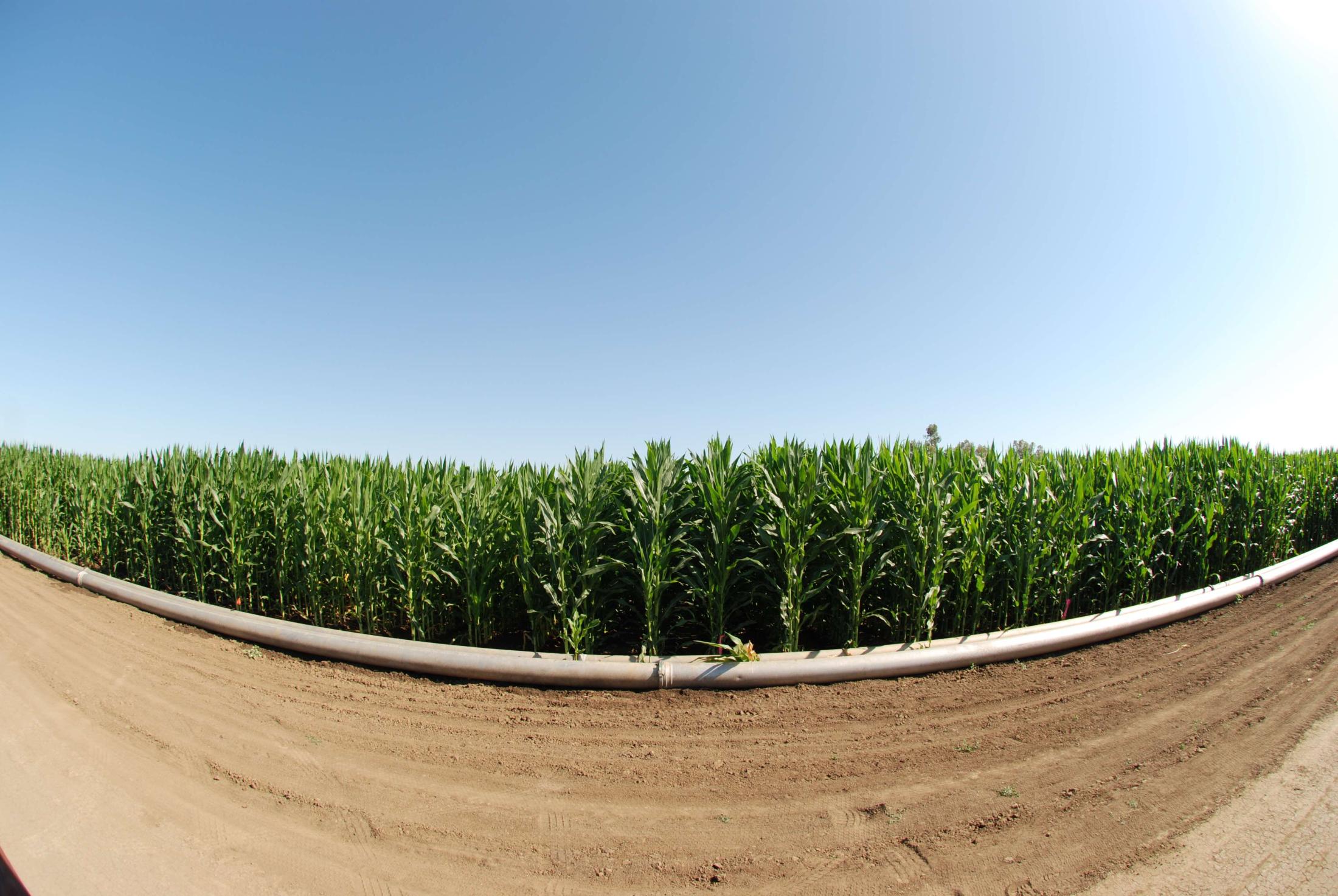We are exploring how to increase the efficiency of water use in California agriculture and test the agricultural and environmental tradeoffs of different irrigation methods in California’s changing climate
Water Use in Context
- Almost 40 percent of freshwater in the U.S. is used to irrigate food and fiber crops
- In times of drought, agricultural withdrawals of water from groundwater and surface waters can put major stress on the nation’s water infrastructure
- California is projected to get hotter and have less reliable rainfall as the climate changes, making more efficient use of water a major priority
- Farmers and researchers are seeking out new methods of irrigation and new ways of monitoring water use with the goal of maintaining soil health and crop yields while using water more efficiently
How we explore water use
Water use research is a prominent focus area. Key research questions we are exploring include:
- Can we increase water-use efficiency and capture more winter rainfall by adjusting management techniques (for example, using cover crops)?
- Is there a way to decrease water use in systems that have high amounts of organic matter in the soil, either by using drip irrigation or sprinklers?
- How does the adoption of highly efficient water-use practices affect crop production?
- With climate change, how sustainable will rainfed winter grain systems be in the Central Valley?

Featured Research Projects
- Comparing drip irrigation to furrow irrigation
- Since 2008 has compared drip irrigation to furrow irrigation, exploring the ways that these irrigation techniques affect key measures on the farm, like:
Water storage in the soil
Nitrate and carbon leaching into water
Nitrogen-use efficiency by crops
Greenhouse gas-emissions
We have installed subsurface drip irrigation on almost all of the irrigated plots in our Century Experiment. A working group of our farmers, faculty, extension specialists and postdocs have used data collected from installed water meters, soil moisture probes, and evapotranspiration sensors to better understand crop water demands and optimize water use in our different systems and crops.
- Drip irrigation in organic fields
- Drip irrigation is increasingly popular on California farms. But drip irrigation has proven challenging to implement in organically managed systems.
For example, cover crops and composted poultry manure are used as the source of fertility on our organic plots, making it more challenging to supply nutrients to the root zone when compared to the liquid fertilizers used by conventional farmers who use drip irrigation.
To explore the pros and cons of using subsurface drip irrigation on organic crops, researchers are working with UC Davis researcher Amélie Gaudin to compare furrow and subsurface drip irrigation in these plots.
- The water-energy nexus
- Received funding from the California Energy Commission as a collaborator with PowWow Energy to explore how using smart meters can help farmers monitor well pumps and optimize irrigation. We have set up a demonstration field to illustrate the water savings in tomatoes, and have collected data from our groundwater wells.
- Testing new innovations in drought management

We are in our second year of testing different varieties of drought resistant wheat and perennial wheat varieties from the Land Institute in Kansas, with the goal of identifying new varieties that may be resistant to drought and other aspects of climate change.